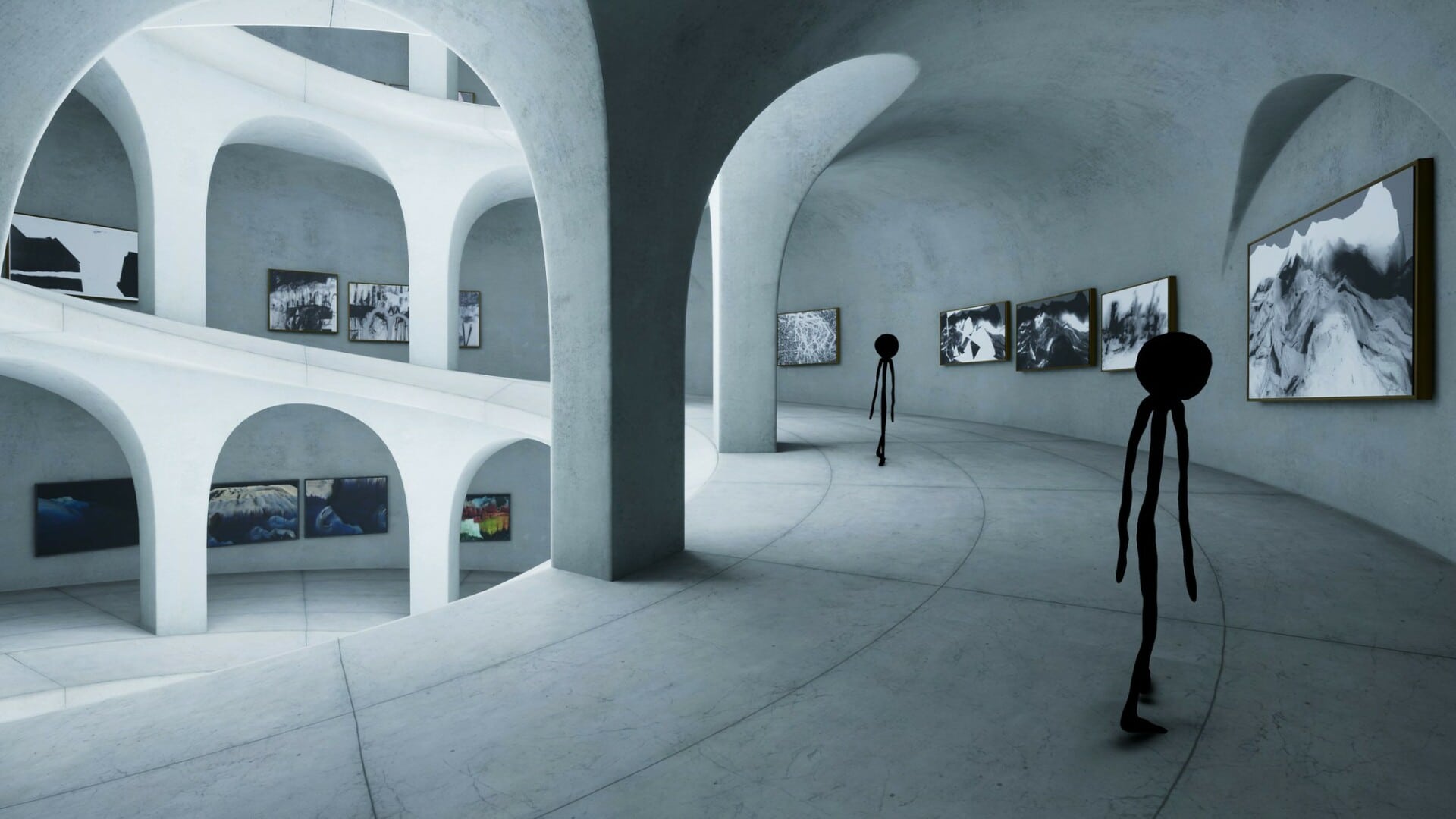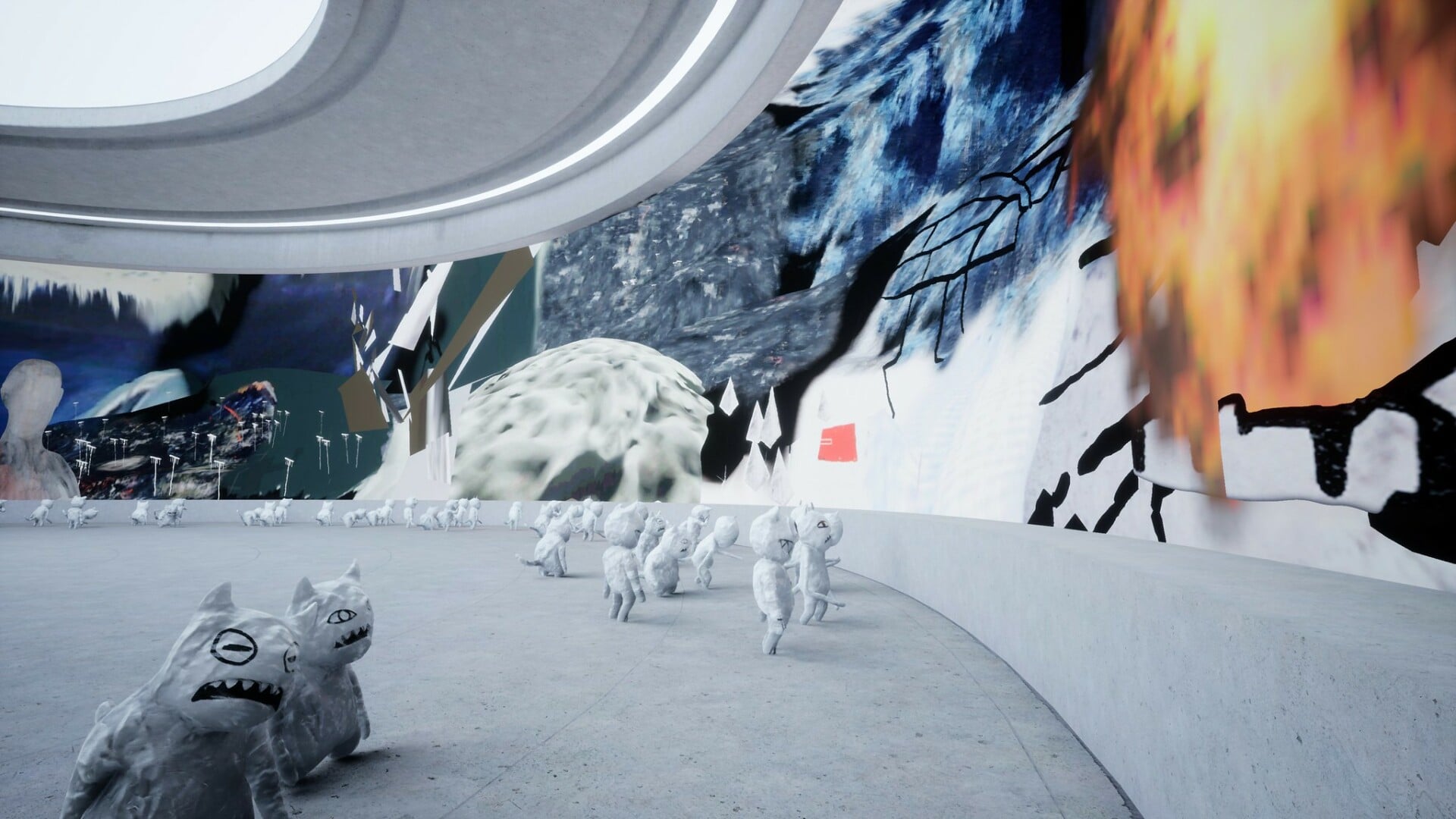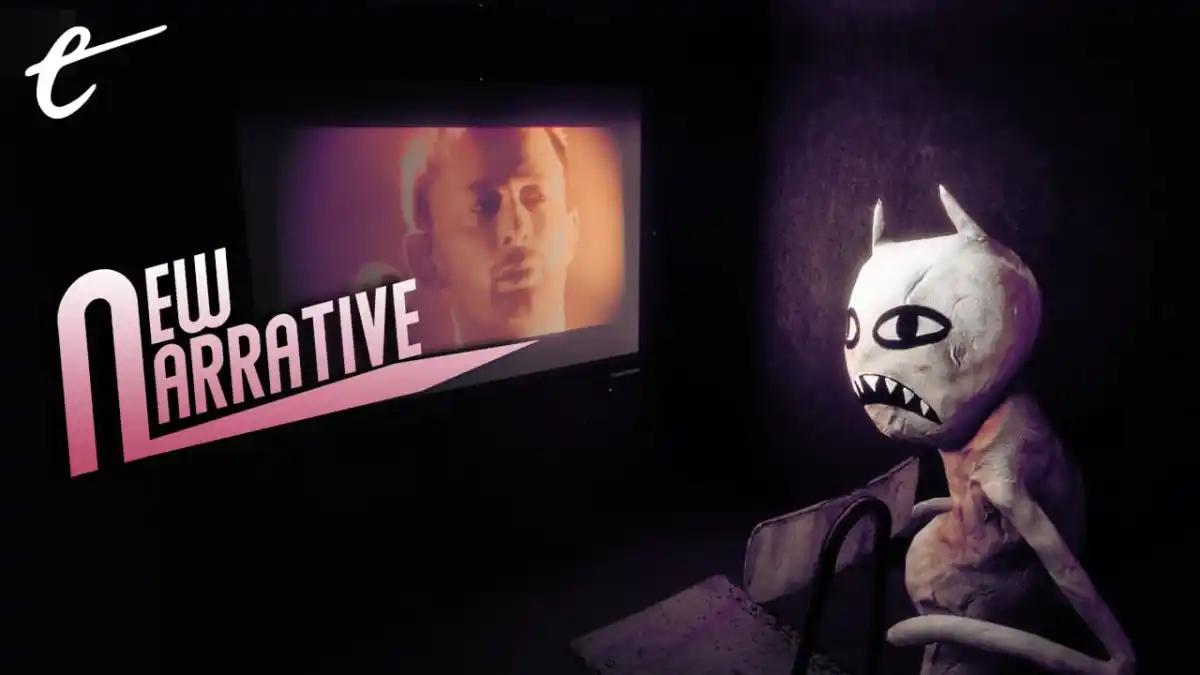In a year that has given us the likes of Genesis Noir, Mundaun, and Cruelty Squad, a virtual art exhibition by one of the world’s biggest rock bands is perhaps not the most unusual release in the medium. Nor is it completely unexpected — virtual performances by real-life artists are increasingly common, and members of Radiohead have toyed with the boundaries between music and other forms of artistic expression for years. Guitarist Johnny Greenwood scored Paul Thomas Anderson’s There Will Be Blood back in 2007, for example, and Anderson worked with frontman Thom Yorke in 2019 on a short film for Netflix and IMAX. There is a sense in which it was only a matter of time before Radiohead expanded into one of entertainment’s most interactive mediums with Kid A Mnesia: Exhibition.
It is fitting, too, that Kid A Mnesia: Exhibition commemorates 20-something years since the band’s fourth and fifth studio albums, recorded at the same time but released in 2000 and 2001 respectively. Looking back, Kid A and Amnesiac are sometimes overlooked in the shadow of OK Computer — arguably the band’s most widely known effort, as well as the one that’s frequently credited for revolutionizing their sound and putting them on a firmly experimental trajectory. However, Kid A and Amnesiac pushed that trajectory much further, incorporating influences from ambient, electronic, jazz, and post-rock and often eschewing guitars or traditional rock ’n’ roll structures altogether.
The choice to mark Kid A and Amnesiac in this way also makes sense from a purely personal point of view. As Yorke has explained, “this period of work was when [Radiohead found their] voice through the artwork.” Meanwhile, Stanley Donwood, the main creator of art for most of Radiohead’s career and a key author of Kid A Mnesia: Exhibition, has talked about making art while the band wrote music in the same space, so the two became intertwined as a single experience.
Even if the existence of Kid A Mnesia: Exhibition is not too surprising then, it does work surprisingly well. Available for free on PlayStation 5 and on PC and Mac through Epic Games Store, it’s essentially a two-hour-ish first-person-perspective walking simulator through a collection of spaces that might be loosely described as a virtual gallery. You can walk or run, look around you, zoom in, and occasionally interact with an object. You can also scan QR codes with your real-life phone, which will bring up a map of the exhibition.
Some of the spaces boast impressive texture and lighting work, and all of them are interesting. Demons trapped in amber or scurrying amongst tree roots, the mountain peaks from the cover of Kid A visible through windows like a real-life vista before an unexpected shift of perspective, liner notes and lyric sheets that cover an entire room like peeling wallpaper — these are just some of the spaces available to explore while entire songs, snippets of songs, and other sounds from the two albums fade in and out in the background.
Each area is marked with a sign for the songs it’s linked to — “Packt Like Sardines in a Crushd Tin Box” this way, “The National Anthem” that way — but the spaces between the main exhibits are no less fascinating. Mostly spans of brutalist concrete architecture, they are populated with creepy stickmen that recall something of the vibe of Anderson and Yorke’s Netflix film. Occasionally, they give way to black or negative space, as well as to a few other surprises that confirm it wouldn’t have been possible to deliver this experience in any other medium.

Indeed, there is a sense in which Kid A Mnesia: Exhibition is the inverse of a traditional gallery. It’s not unusual for modern galleries and museums to rely on QR codes and augmented reality to enhance physical exhibits. By using QR codes that link from a virtual space to a physical one, digital replicas of physical objects, and clips of real-life live performances, Kid A Mnesia: Exhibition flips this approach on its head. Rather than the digital being used to enhance the physical, the physical is used to enhance the digital.
Unfortunately, not everything works quite so well. A late-game segment that I won’t spoil starts hauntingly to Kid A’s “How to Disappear Completely” but goes on for too long without the option to exit or exert much control over how it plays out. It’s impressive, with particle effects that recall something of Rez Infinite’s Area X, but the overall impression is dulled by a lack of player agency that becomes increasingly frustrating as the sequence plays out.
More problematically, scanning QR codes brings up not only a map of the exhibition, but a baffling array of eye-wateringly priced merchandise (anyone for a £95 fine bone china teapot?). Eventually, scanning the codes starts to feel like an inadvertent stumble through a museum gift shop and seems like an odd choice for a band that was at the forefront of the pay-what-you-will distribution movement for their music. Then again, given free admission, perhaps one can understand the inclusion of completely optional monetization.

In any case, whether flaws or features, these things do not detract from Kid A Mnesia: Exhibition as a fascinating artifact. There is a curious contrast between how fresh the music still sounds and how dated some of the cultural references have become — a red telephone box, for example, or caricatures of UK Prime Minister Tony Blair, whose brand of politics was the target of much of Radiohead’s disillusionment at the time.
The emphasis on negative memories, abstraction, and symbolism, as well as on repackaging the two albums in a soundtrack format, keeps the exhibition from turning into a nostalgia piece. Instead, it inhabits a curious gray area between the old and the new. It’s essential for Radiohead fans, of course, but it’s worth the time of anyone who is interested in what the video game medium can offer beyond traditional play.






Published: Dec 1, 2021 11:00 am